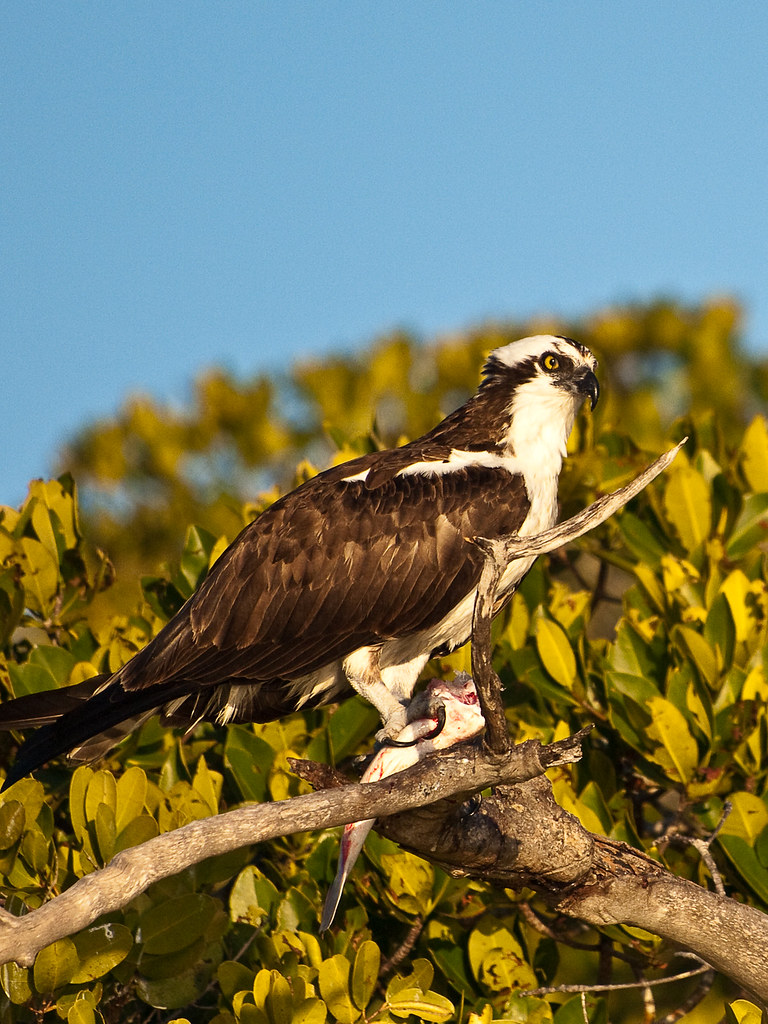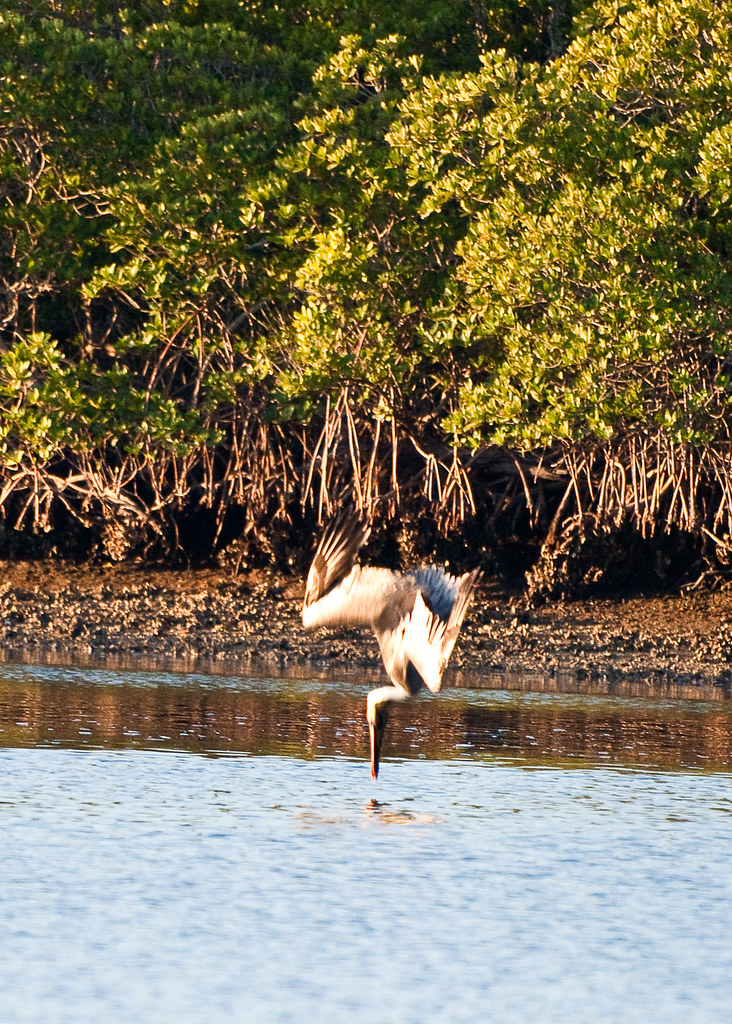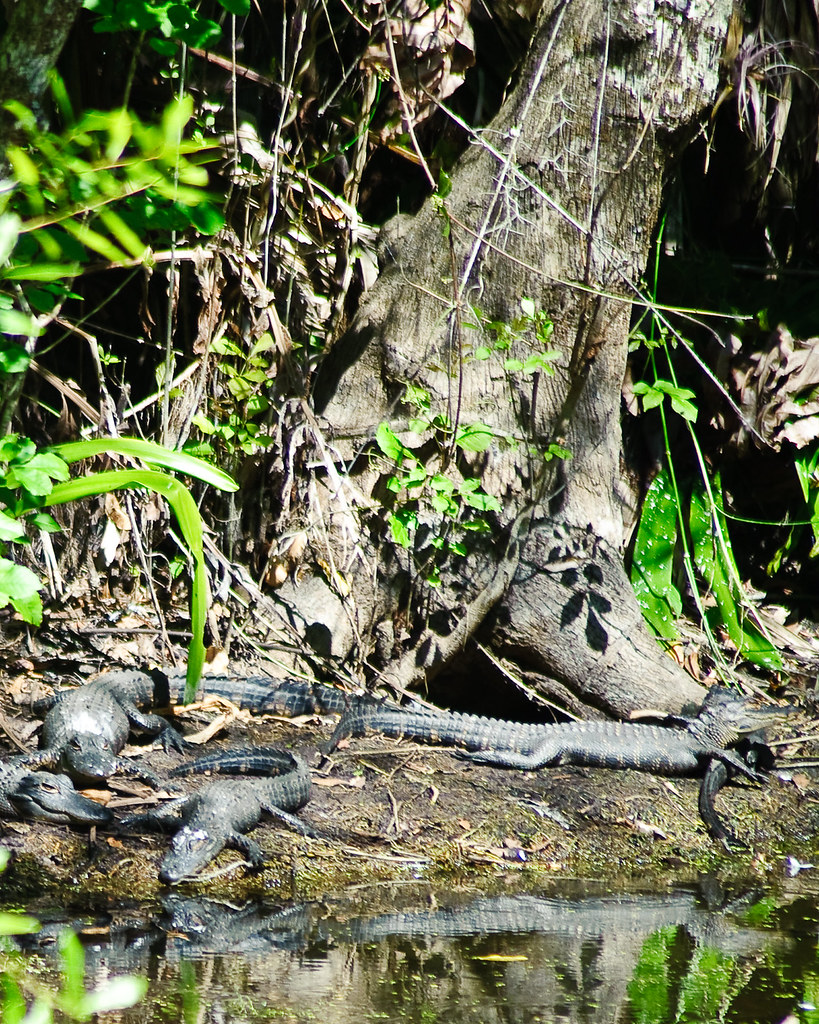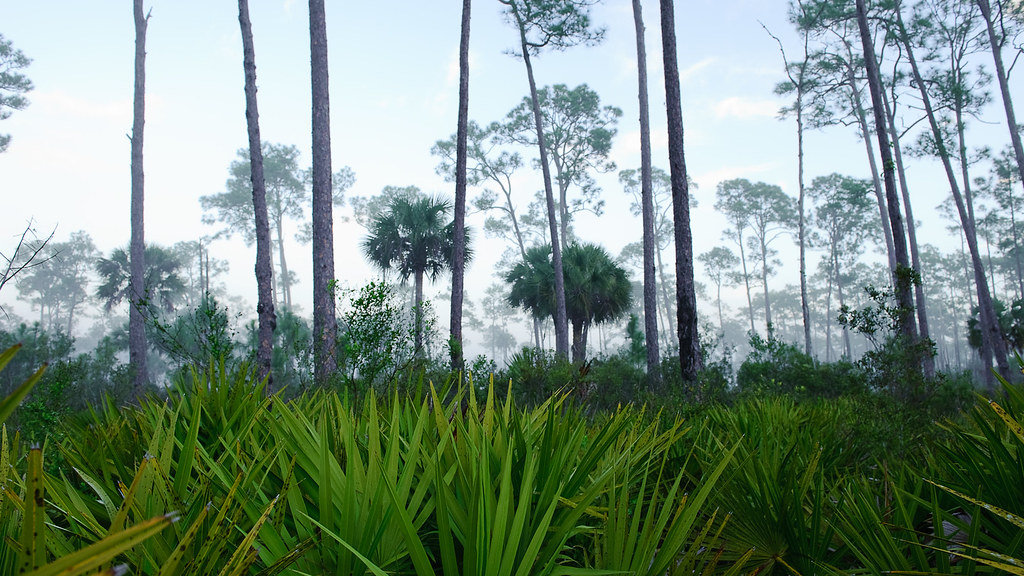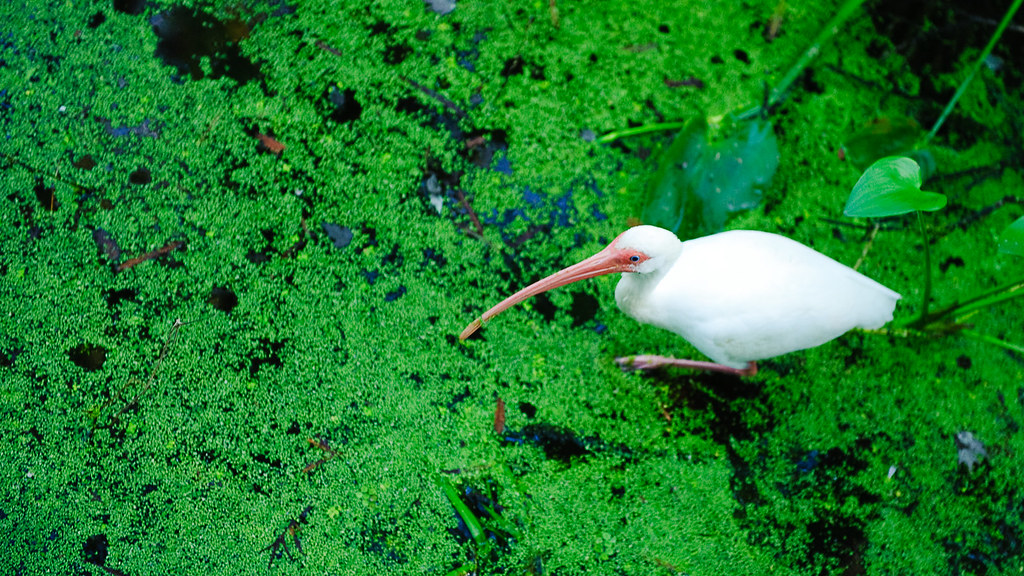Southwest Florida is a great place to watch nature and wildlife. It seems that wherever we went, we were treated to some new sight. On our first walk through town, Alex stopped, said, “What’s that?” and reached out his hand to something on the sidewalk. Luckily, those little brown anoles are quick little lizards and it darted away long before Alex could touch it. (The anoles were so quick that I was never able to photograph one.) That was our introduction to Florida wildlife.
I saw something new every day just around town. There were fish jumping in the canal behind the house. One evening, as the sun was setting just after dinner, we heard a really loud bird, It took us a minute, but we eventually spotted the osprey sitting high in the tree in the back yard. The most fun sight came on an early morning walk that Alex, Molly, Patrick and I took to the pier. As we walked out on the pier, we saw a dolphin swim underneath it. For the next 10 minutes, we caught glimpses of the dolphin’s back around the pier. Then, as we were leaving, I saw in the distance that the surface of the sea about the size of our living room was splashing wildly. Pelicans repeatedly dive-bombed that part of the water, and I saw two dolphin backs circling around it. The dolphins must have successfully corralled a school of fish near the surface, and everybody was having breakfast.
> > _An osprey with his half-eaten breakfast. Chokoloskee, Florida._ > >
While in Florida, I took two little mini-vacations within my big vacation – photo trips sans kids. On my second full day in Florida, I drove down to Chokoloskee Island, which is one of the rare populated islands in the 10,000 Islands region of the Everglades. I’d booked a photo boat tour through the islands. I’d spent a while looking on the web for Everglades tours that catered to photographers. This one looked promising, because the tour left at 7:00 AM. (Gotta catch that early light!) What surprised me when I got there was I was the only person on the tour. “You’re it,” the boat captain said. “I don’t take multiple photographers out any more. They keep fighting about who’s turn it is to try to take the shot. One group almost got into a fist fight.”
Since my nature photography to date has mostly been landscapes and animals in zoos, this was my first real experience with wildlife. As in, “animals that are small, far away from you, and are free to move about quickly and without asking your permission.” On top of this, I was shooting from the bow of a moving boat. It’s amazing that any pictures turned out at all.
> > _A Great Blue Heron decides it doesn’t like the boat after all, and decides to leave._ > >
The boat captain was great. He knew the area well, knew his birds, and knew how to get to interesting bird feeding areas. The photo trip would likely have been more productive if I had a quarter of his knowledge of the animals of the area. Instead, I kept wasting precious time on dumb things. Look! Pelicans! Snap snap snap snap snap. Look! Ibises! Snap snap snap snap snap. My excuse is Seattle is as far away from Southwest Florida as you can get and still be in the continental United States. How was I to know that pelicans and ibises were two extremely common birds in that part of Florida, so there would be much easier ways to photograph them than from the bow of a moving boat.
> > _A pelican diving for breakfast, Chokoloskee, Florida._ > >
Driving back from Chokoloskee, I had my most influential Florida wildlife experience. I stopped at Big Cypress Bend Boardwalk on a whim. It’s a well-maintained boardwalk that goes through a cypress swamp in the Everglades. I strolled along the boardwalk, taking pictures of the foliage and the occasional animal. (Look! A raccoon! Snap snap snap snap.) The boardwalk ends at the edge of a small pond. There are trees all around. I see a Great Egret in the water and an Anhinga in the tree. I take a few pictures of the birds and get ready to leave. That’s when I happen to overhear a couple talking. “Hmm, I now see six. I thought there were seven earlier.” That makes me stop and look a little harder.
Oh! Look, there are baby alligators under the tree! Snap snap snap snap.
> > _Baby alligators, Big Cypress Bend. Mama is just off camera, left. She was too obscured by plants to photograph. But I could see enough of her back to realize how small these alligators are in comparison._ > >
It was a strange experience to see alligators just out in the open like that. This wasn’t a zoo, they weren’t in a cage. Both the alligators and myself just happened to want to be in the same spot at the same time.
As I was leaving Big Cypress Bend, another person there advised me to go to the Corkscrew Swamp Sanctuary if I wanted to see a lot of wildlife. (She also advised me to just look along the side of the road if I wanted to see more alligators. And sure enough, I spied three more just driving back to Naples. I guess seeing alligators in Florida is as common as seeing deer in Virginia.) My second vacation-in-a-vacation was a sunrise journey to Corkscrew Swamp Sanctuary. This is a large, well-maintained Audubon Society sanctuary in Naples. Like Big Cypress Bend, the centerpiece of Corkscrew Swamp Sanctuary is a boardwalk through the swamp. The Corkscrew Swamp Sanctuary boardwalk is 2.5 miles long and wanders through several different habitats. I ran out of golden morning sunlight well before I ran out of interesting landscape and wildlife subjects at Corkscrew.
> > _Pine forest, Corkscrew Swamp Sanctuary._ > >
In my 10 days in Florida, I feel like I only scratched the surface of exploring and photographing the different habitats there. I guess I’ll have to go back someday.
> > _Look! An Ibis! Corkscrew Swamp Sanctuary._ > >
